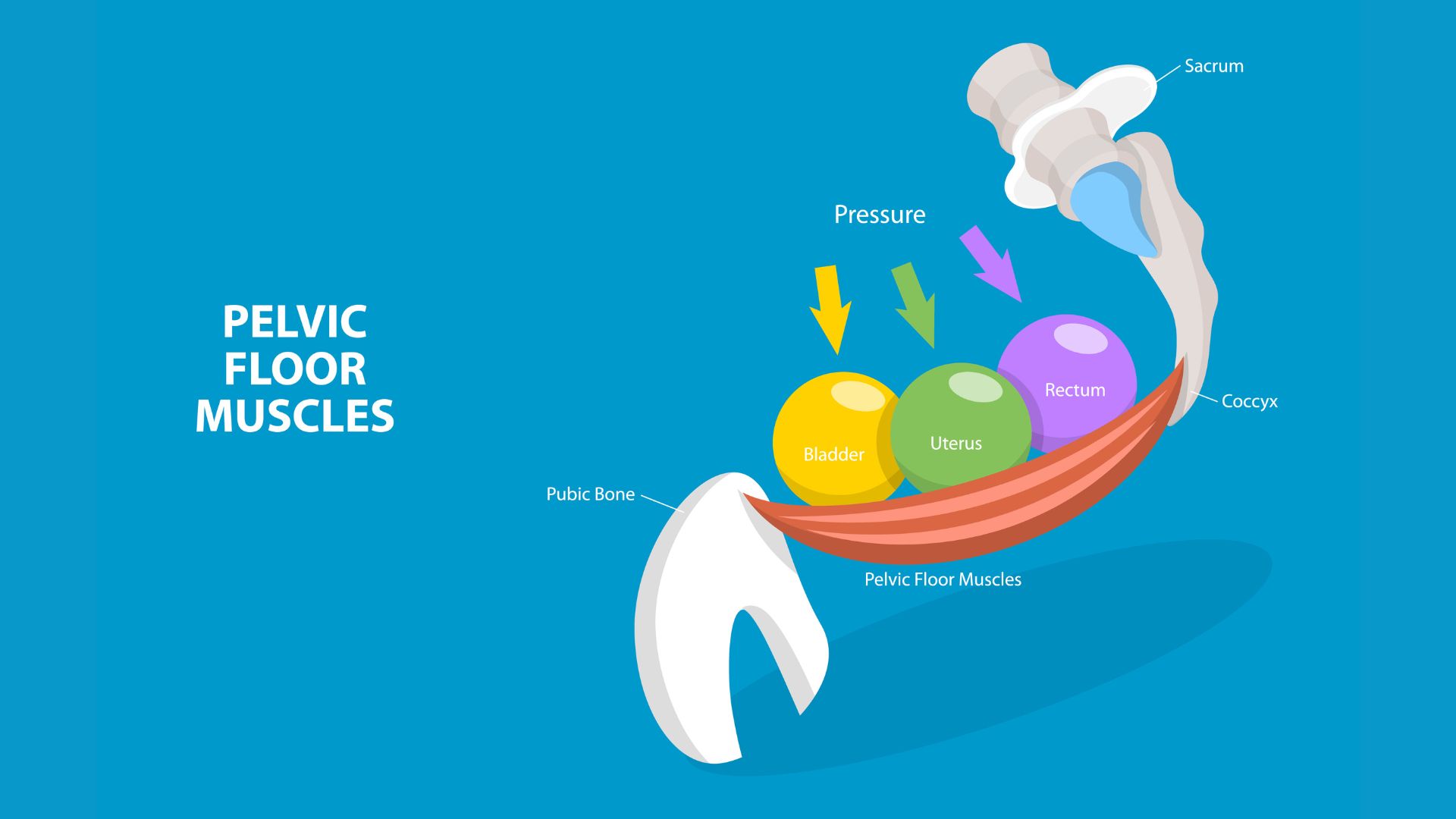Kegel exercises are the 'gold standard' for boosting pelvic floor strength - here's how to do them in 6 steps
Most of us know that strengthening our pelvic floor only gets more important as we age, and the most effective way to work these muscles is with Kegel exercises


Whether you know them as Kegel exercises or pelvic floor exercises, one thing is for sure: we should all be doing them every day. Consider this your comprehensive guide to Kegels, from what they are to how to perform them (with and without a pelvic floor trainer).
Whatever stage of life you’re enjoying, you’ll likely have heard of the pelvic floor. As we travel through life, this set of muscles (located at the base of our pelvis) becomes increasingly vital for a whole range of bodily functions, from keeping us continent in menopause to supporting our organs in later life.
Ideally, we should start doing Kegel exercises as early as possible. In our teenage years is best, says Anna Woolley, pelvic health expert, physiotherapist, and Pilates instructor at Core LDN. But if, like me, you didn't get the memo until you had children, you're not alone.
Kegel exercises are a lifelong commitment, just like any exercise, which means it's never too late to start, says Woolley.
What are Kegel exercises?
Kegels (or pelvic floor exercises as they’re also known) are a set of internal exercises, generally accepted as the gold standard in improving pelvic floor function.
The pelvic floor is a hammock of muscles that hold the bladder, bowel, vagina, and uterus in place, explains Dr Shirin Lakhani, a menopause and women's health specialist. “These muscles support the pelvic organs, and when they aren’t strong enough, it can cause pelvic floor disorders such as prolapse and incontinence, which can be both urinary and faecal," she says.
Just like any other muscle in the body, you have to exercise to strengthen it. "Kegel exercises involve repeatedly contracting and relaxing the pelvic floor muscles to strengthen them,” explains Miss Sushma Srikrishna, a consultant gynaecologist and urogynaecologist at London Bridge Hospital. “Named after Dr Arnold Kegel, they are often recommended to improve pelvic health, particularly in women who are pregnant, postpartum, or experiencing pelvic floor dysfunction.”
Sign up to our free daily email for the latest royal and entertainment news, interesting opinion, expert advice on styling and beauty trends, and no-nonsense guides to the health and wellness questions you want answered.
You’ll likely know the drill: engage your muscles as if you’re trying to stop yourself from having a wee, release and repeat. However, there's more to Kegel exercises than just this.

The diagram shows where the pelvic floor muscles sit in relation to other parts of the body.
Benefits of Kegel exercises
1. Improves bladder and bowel control
“Kegel exercises primarily strengthen the pelvic floor muscles,” notes Dr Lakhani. “This can significantly improve bladder control, reducing the incidence of stress urinary incontinence, a common issue many women face post-pregnancy or with ageing.”
In perimenopause, the decline in oestrogen affects all our muscles, and without proper intervention (like strength training), we can start to suffer from sarcopenia (muscle loss). The same goes for the pelvic floor muscles, and Kegel exercises can help prevent this from happening.
2. Enhanced sexual health
“When performed correctly, kegel exercises can enhance sexual sensation,” Shrikrishna says, as it's thought that increased muscle control and blood flow to this area can improve sensation and help orgasms feel more intense during sex and masturbation.
In a study published in the European Journal of Obstetrics & Gynecology and Reproductive Biology, Kegel exercises were found to be more effective than lubricant gel for improving sexual satisfaction in menopausal women.
3. Improved core stability
You wouldn't think that Kegels would be one of the best core exercises to do at home, but they are. The pelvic floor is considered to be part of the 'deep core', which includes muscles beyond the abdominals that stabilise the spine and pelvis.
“The pelvic floor area works in harmony with the diaphragm, deep abdominals, spine stabilisers, and glutes to create your Pilates Powerhouse,” explains Pilates instructor Sam Deville.
“This encompasses the muscles that initiate, support, and control almost every movement you make, both on and off the mat. When these muscles are strong, coordinated, and reactive, everything from balance and breath to strength improves," she says.
"Many core exercises can be deepened and refined by actively engaging the pelvic floor, turning a simple movement into something more powerful and effective.”
4. Better quality of life
It’s fair to say that a fear of peeing yourself (or worse) in public feels debilitating and restrictive, and affects self-esteem and confidence. Despite the prevalence of issues linked to the pelvic floor, there’s still a sense of shame and secrecy surrounding them.
“Incontinence can affect your social life and cause anxiety, depression and stress due to the worry and embarrassment associated with the condition,” agrees Dr Lakhani.
As such, working on pelvic floor stability and control can be transformative for overall quality of life, particularly if you’ve been avoiding certain activities.
“For women who love exercise – especially high-impact or high-intensity classes – kegel exercises are key to avoiding leaks or discomfort and building long-term core stability,” says fitness educator and founder of Cadence, Melissa Power. “Women with a weak pelvic floor will tend to avoid exercises like jumping, skipping, or even running for fear of losing bladder control.”
5. Simple and accessible
Last but certainly not least, kegels are super accessible. Once you’ve identified how to do them properly, the beauty of pelvic floor exercises is that you can do them anytime, anywhere - and no one will be any the wiser.
“You can do Kegels sitting at your desk or relaxing on the sofa,” says Srikrishna. “It’s highly unlikely anyone would know you are doing them."
While devices like the Elvie pelvic floor trainer or the Elitone trainer are popular and useful, you don't need them to do Kegel exercises. This workout doesn't require any equipment.
How to do Kegel exercises
1. Identify the muscles
"To locate your pelvic floor muscles, try squeezing the muscles you would use to stop passing gas or to stop urination midstream," says Srikrishna.
"You should feel a gentle pulling in the rectum and vagina.”
2. Find the right position for you
"It’s important to vary the position that you are in when you do pelvic floor contractions,” says Woolley.
“The easiest position to begin with is lying or side lying. As you get stronger, you can progress to sitting, kneeling on hands and knees, and eventually standing and finally, while moving or doing impact exercises.”
3. Focus on your breath
If you're a fan of Pilates abs workouts, you'll know the importance of this.
The breath is hailed as the key to an effective kegel exercise, so Dr Lakhani advises breathing in and out slowly to prepare.
On an exhale, draw in the pelvic floor muscles.
4. Contract and hold
Start by contracting the muscles for a count of five seconds, then relax for five.
“For women who struggle to find the right sensation, I often use the visual cue of imagining gently squeezing a tampon and drawing it upwards,” says Deville. “It’s a simple image, but it really helps connect the mind to muscle.”
5. Release the contraction
Being able to release your pelvic floor muscles fully is a vital part of healthy function. “Because we spend so much time sitting on our pelvic floor, it often ends up restricted and tight,” says Olivia de Maigret, an osteopath and the founder of Four Mamas. “Learning to release it is an important skill.”
Release the contraction on an inhale.
6. Repeat
Ideally, you’ll be able to repeat this process around ten times per session, two to three times per day, but don’t worry if you need to work up to this.
What do you need to do Kegel exercises?
As touched on above, you don’t need any specialist equipment to start pelvic floor exercises. That being said, learning how to use a pelvic floor trainer can be helpful, particularly if you’re having difficulty pinpointing the muscles to begin with.
“Pelvic floor trainers can be a useful tool to facilitate and enhance how you carry out a Kegel or pelvic floor contraction,” says Woolley.
There are two main types:
Electrical stimulation and Biofeedback devices
"Electrical stimulation devices are generally advised for people with lower strength (a flicker to a very gentle squeeze), while a biofeedback device helps you to connect more with the muscles and enables you to carry out the different types of pelvic floor contraction," she says.
In each case, you’ll need to insert a small probe connected to a handheld device, or even an app on your phone. Electrical stimulation machines will pulse gently to activate the contraction of the correct muscles.
A biofeedback machine will detect your individual contractions and provide feedback on them, which can help with technique and activation.
External props
Props such as squeezy balls, loop bands and weights can also help add challenge and variety to contractions.
“Props can also be really helpful in facilitating pelvic floor engagement,” says Deville. “In Pilates, we use things like soft Pilates balls, loop bands and weights to help either facilitate or challenge the pelvic floor contraction."
For example, you could lie on the floor with a ball between your knees and carry out a pelvic floor contraction while squeezing the ball. "You will find this helps to engage the muscles and is often a good exercise to start with," she says.
Kegel balls
Kegel balls are the manual version of a pelvic floor trainer. You might learn how to use Kegel balls for better orgasms, but this works as they target the pelvic floor.
These are often also known as Ben Wa balls or vaginal weights, and are inserted into the vagina to provide resistance during pelvic floor exercises. Much in the way that dumbbells offer added resistance during weight training exercises.
They can be tech-free or have technical assistance, like in the Intimina KegelSmart 2 device.
Tips for doing Kegel exercises
- Remember that less is more: We’re aiming for controlled contractions, rather than quick, forceful pulses.
- Consistency is key: Download an app (the NHS Squeezy app is endorsed by experts), put a note on your calendar, or set a reminder on your phone to do your pelvic floor exercises.
- Incorporate them into daily life: We're all busy, so try to include Kegel exercises into your routine. You could do them while brushing your teeth or waiting for the kettle to boil. It'll soon become a new habit.
- Up the intensity: Just like any other muscle, you should up the intensity (when appropriate) to see results. This might mean progressing from doing the exercises lying down to sitting up, or adding a few seconds to your hold before releasing fully.
- Don't neglect the rest of your body: Remember that the pelvic floor is a whole chain of muscles, and they’re all connected. Strengthening the inner thighs, glutes, and deep abdominals can all help improve pelvic floor function. Exercises like shoulder taps and dead bugs can help with this at home.
- Consider consulting a professional: If you’re struggling or not sure what the issue is, all of our experts advise seeing a qualified women’s health physiotherapist, who will be best placed to advise on your current strength and ability. They will also guide you to an appropriate programme or training device to suit your individual needs.
Anna Bartter is a freelance health and fitness writer who writes across a range of publications, including woman&home, Marie Claire, Stylist, Psychologies and more. She's never happier than when trying out a new wellbeing trend, and when she's not writing, she's most likely to be found at a reformer Pilates class.
You must confirm your public display name before commenting
Please logout and then login again, you will then be prompted to enter your display name.
